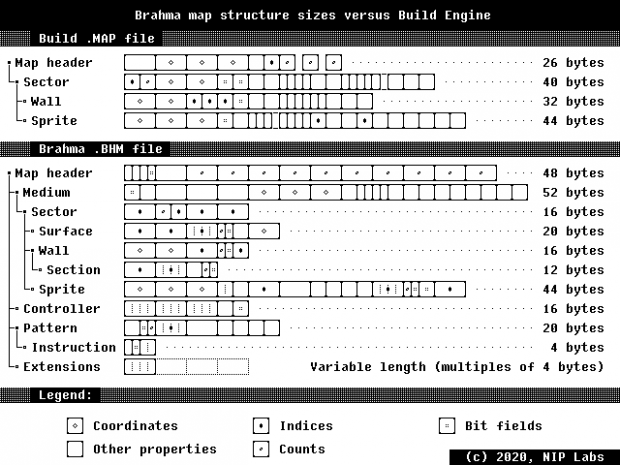Brahma is a 3D game engine with a rather retrofuturistic design, intended for small studios and solo developers. It's being written from scratch in C++ using standard Windows API and no third-party libraries. This technology introduces an entirely new class of low-latency real-time engines that make special timing requirements, treating frames as video fields with a target time budget of 2-4 ms each, down from 16-33 ms frame budgets normally seen in game engines. It evolves in a different way than other modern engines, rejecting conventional BSP, Z-buffer, floating-point coordinates, and most of the lame screen-space effects in favor of innovative and efficient techniques. The engine is non-Euclidean capable to some degree; also it supports true displacement mapping for sectors as a means to virtualize geometry that affects collisions. The engine is also carefully designed to be easy and convenient to develop for, yet versatile and adaptive to any needs.
Here I've tried to visualize map format structures from my engine and Build, with an approximate object hierarchy tree. Although the basic principles of my engine carry a strong resemblance to Build, the map format and data fields are totally different. My engine tends to use many small structures instead of fewer larger ones. For instance, each Build sector (40 bytes) is normally converted into a Brahma sector with two surfaces, two patterns and two instructions, counting up to whopping 104 bytes, but this figure is subject to a lot of optimizations, as my engine can easily share repeating patterns, surfaces, or incorporate simple instructions into other structures.






